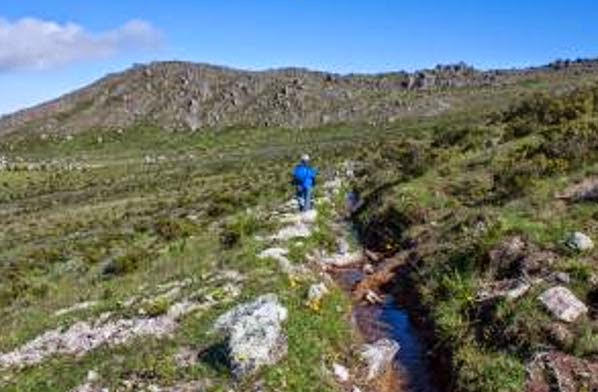 The 24 official contestants
The 24 official contestants Miss Peru US, Natalie Vertiz won the Best Figure award
Miss Peru US, Natalie Vertiz won the Best Figure awardSpecial thanks and credits to GlobalBeauties
source: (Thank you and credits to
http://freedom-guy.blogspot.com/
and all sources for the information and pictures)

 The 24 official contestants
The 24 official contestants Miss Peru US, Natalie Vertiz won the Best Figure award
Miss Peru US, Natalie Vertiz won the Best Figure award
 The 24 official contestants
The 24 official contestants Miss Peru US, Natalie Vertiz won the Best Figure award
Miss Peru US, Natalie Vertiz won the Best Figure awardVIA The final of Miss Peru 2011 will be held on 25th Jun 2011


The Ministry of Culture finished with the recuperation of the archaeological site of Quebrada Santo Domingo in Laredo district of Trujillo, reports Andina news agency.
The eradication of invasive crops, pipes and perimeter fences began at 9:00 a.m. on Wednesday, July 8 and lasted until 4:00 p.m.
About 70 people, including members of the Decentralized Cultural Department of La Libertad (DDCLL) and members of the National Police of Peru (PNP) of the Tourism Division and Environmental Protection participated in the recovery.
“Today we are doing, more than anything a cleansing, of which an extrajudicial intervention has already been done on May 20, we’ve come to find that they have again invaded. So we will put greater emphasis on protection, in the security zone,” said prosecutor Javier Paredes.
During the clean up, the activity of invaders was evident. The site was being used to cultivate crops and for settlements. Prior to the clean up, the invaders withdrew their belongings peacefully.
“Our obligation is to exercise the powers laid down by law. In that sense our duty to persevere is in legal actions, which we will exercise as many times as necessary,” said director of DDCLL Maria Elena Cordova Burga.
Author: Hillary Ojeda | Source: Peru this Week [July 09, 2015]


The mummy was found Tuesday morning in a fetal position, tied with a rope, in a cardboard box near trash outside an archeological site in the Pre-Incancity of Chan Chan.
"[The cleaners] thought it was rubbish and put it in the compactor but one cleaner opened it up and discovered it was a mummy,'' said David Carrasco, municipal security at Huanchaco District, according to Reuters.
If it wasn't for the one cleaner, it's very possible the ancient discovery would have been thrown out for good.
According to local media reports, the mummy, believed to be an adult because of the size of its teeth, was taken to the police station.
Police have reportedly not ruled out the possibility that the mummy was left in a cardboard box in a botched robbery attempt from its original burial location at the archaeological site. The mummy was found in a building in front of the site.
The skeletal remains will be sent to the Ministry of Culture for analysis to determine its age.
Chan Chan is the largest Pre-Columbian city in South America. It flourished as a major capital of 30,000 people until its conquest by the Inca Empire in 1470.
The Minister of Culture told Peru's El Comercio newspaper that the mummy may be pre-Hispanic and may belong to the Chimu culture.
Source: Fox News Latino [April 16, 2015]


 Giselle Patrón Miss Amazonas |  Carmen Vizcarra Miss Apurimac |  Adriana Conde Miss Arequipa |
 Jessenia Espinoza Miss Ayacucho |  Mayra Farje Miss Callao |  Roxana Díaz Miss Cajamarca |
 Miluska Huaroto Miss Cuzco |  Cindy Mejia Miss Ciudad de Lima |  Wendy Llanos Miss Huancavelica |
 Kenia Brack Miss Huánuco |  Odilia García Miss Junín |  Giselle Torres Miss La Libertad |
 Luciana Onetti Miss Lambayeque |  Grace Mejia Miss Lima |  Nicole Faveron Miss Loreto |
 Tatiana Zapata Miss Moquegua |  Della Rivera Miss Pasco |  Carla Gutiérrez Miss Piura |
 Sofía Cornejo Miss San Martín |  Sherina Ruiz Miss Tacna |  Estefany Bueno Miss Trujillo |
 Lía Lemor Miss Tumbes |  Natalie Vertiz Miss Usa Perú |  Katty Villayzan Miss Villa Rica |
courtesy photo of miss peru website
source: (Thank you and credits to

Giuliana Zevallos, Miss Perú Universe 2010
Check out below the official Miss Peru 2011 contestants in swimsuit.
 Giselle Patrón Miss Amazonas |  Carmen Vizcarra Miss Apurimac |  Adriana Conde Miss Arequipa |
 Jessenia Espinoza Miss Ayacucho |  Mayra Farje Miss Callao |  Roxana Díaz Miss Cajamarca |
 Miluska Huaroto Miss Cuzco |  Cindy Mejia Miss Ciudad de Lima |  Wendy Llanos Miss Huancavelica |
 Kenia Brack Miss Huánuco |  Odilia García Miss Junín |  Giselle Torres Miss La Libertad |
 Luciana Onetti Miss Lambayeque |  Grace Mejia Miss Lima |  Nicole Faveron Miss Loreto |
 Tatiana Zapata Miss Moquegua |  Della Rivera Miss Pasco |  Carla Gutiérrez Miss Piura |
 Sofía Cornejo Miss San Martín |  Sherina Ruiz Miss Tacna |  Estefany Bueno Miss Trujillo |
 Lía Lemor Miss Tumbes |  Natalie Vertiz Miss Usa Perú |  Katty Villayzan Miss Villa Rica |
courtesy photo of miss peru website



The photos above demonstrate that between March 1 (the first photo) and April 11 (the second photo) of this year, the geoglyph was removed from the earth and tilled by agricultural invaders.
The Peruvian Association of Rock Art (APAR) reported that the individuals responsible were indeed people who strived to rid the site of any archaeological evidence in the hopes of irrigating and occupying the land for agricultural purposes.
Representative of APAR, Victor Corcuera determined that the invaders did the damage intentionally as they only drove their machinery on the geoglyphs and left the remaining land un-furrowed, according to El Comercio.
Archaeologists have determined that the geoglyphs design belongs to a phase later than that of the Chimu culture. The figure was considered one of the most well-known of the geoglyphs recorded in the region.
José Carlos Orrillo Puga, photographer of the photos, believes these perpetrators will continue to destroy the sites. “There are dirt roads leading to other sectors where geoglyphs remain intact,” Puga said.
Archaeologist Gori Tumi Echevarria told El Comercio, “The destruction of the Triple Spiral is a disgrace to the Peruvian archaeology, which can not allow the evidence to be destroyed and go unpunished.”
The Ministry of Culture announced this year that it does not have the resources to protect more than 1,000 of Peru’s archaeological sites. Recent denouncements of invasions and destruction of sites has the Ministry struggling to protect its sites.
Author: Hillary Ojeda | Source: Peru this Week [April 16, 2015]


 Untouched by civilisation: The unknown indian tribe are thought to belong to the group sharing the Pano language
Untouched by civilisation: The unknown indian tribe are thought to belong to the group sharing the Pano language The community is near the border with Peru in the massive Vale do Javari reservation, which is nearly the size of Portugal and is home to at least 14 uncontacted tribes
The community is near the border with Peru in the massive Vale do Javari reservation, which is nearly the size of Portugal and is home to at least 14 uncontacted tribes The group are thought to live on bananas, corn, peanuts and other crops which they grow themselves
The group are thought to live on bananas, corn, peanuts and other crops which they grow themselves 'Lost': The isolated tribe, believed to share the Pano language, have plantations of corn and bananas near their homes
'Lost': The isolated tribe, believed to share the Pano language, have plantations of corn and bananas near their homes Discovery: The roofs of 'malocas' - huts - are visible above the canopy of the jungle along the Javari River in Brazil
Discovery: The roofs of 'malocas' - huts - are visible above the canopy of the jungle along the Javari River in Brazil

The destruction of a 600-year-old geoglyph in Trujillo made headlines in April after agricultural invaders attempted to erase the structure to make room for crops.
Since the incident was discovered investigators have searched the region to find out that hundreds in the area have been destroyed and remain in danger.
El Comercio reported yesterday, two months after the destruction, that the geoglyphs continue to face invasion and threats from agricultural invaders.
On May 21, the Ministry of Culture announced 250 hectares of previously destroyed geoglyphs had been restored.
Despite few advancements, in the district of Laredo in Trujillo, the Santo Domingo gorge is still seeking protection and continues to be invaded.
Residents in the Santo Domingo area told El Comercio that the lands had in fact been sold about four years ago to lawyers. They paid between S/. 3,000 and S/. 4,000 for each lot obtained.
Author: Hillary Ojeda | Source: Peru This Week [June 03, 2015]


Lima is one of the world's largest desert cities and relies for water on rivers that flow out of the Andes. But those rivers diminish to a trickle during a long dry season, leaving the population of almost 9 million with intermittent water supplies.
Now the city's water utility company, Sedapal, has decided to invest in conservation projects in the Andes to keep the rivers flowing and taps running. And researchers have discovered that the most cost-effective way is to revive a system of ancient stone canals, known locally as amunas, that were built in the Andes by the Wari culture between AD 500 and 1000, centuries before the rise of the Incas.
Forgotten paths
The canals captured water from rivers in the mountains during the rainy season and took it to places where it could infiltrate rocks that fed year-round springs further down the mountains, so maintaining river flow during the dry season.
The amunas fell into disrepair long ago and had been largely forgotten. In most places, their water now quickly returns to the rivers. But hydrologists such as Bert De Bièvre of Condesan, a Lima-based non-governmental organisation behind the project, say re-grouting the lined stretches of the canals with cement would allow them to resume their original purpose.

"The idea is to build a timelag into the hydrological system, delaying water run-off for weeks or even months until it benefits water supply in the dry season," De Bièvre says.
SEDEPAL has now decided to fund the plan by taking 1 per cent from its water charges for the next five years. The costs are estimated to be $23 million.
Holding back the flood
Lima has water shortages for seven months of the year but during the other five months, the Rimac, Chillon and Lurin rivers, which pass through Lima on their way to the Pacific Ocean, regularly cause floods and landslips. Keeping floodwaters back for the dry season makes obvious sense.
Research into the hydrology of individual canals is still in progress. "We have been injecting ink into the canal water to see where it resurfaces," says De Bièvre. But he is confident that the project could revive 50 amunas, mostly in the Chillon catchment.
According to a study by De Bièvre and Gena Gammie, a water specialist at Forest Trends, an NGO based in Washington DC that is backing the project, that should be enough to increase water supplies to Lima by 26 million cubic metres, and reduce the city's current water deficit in the dry season by as much as 60 per cent.
According to the study, other green investment initiatives that could keep water on the mountainsides for longer include reviving forests, wetlands and ancient agricultural terraces, and restricting livestock grazing on upland pastures. But the study found that reviving amunas would be by far the cheapest option, costing less than a hundredth as much as water from the city's new desalination plant.
Author: Fred Pearce | Source: New Scientist [April 20, 2015]

 Slovania (5th), Luxembourg (3rd), Venezuela (1st), Dominican Republic (2nd), and Bolivia (4th)
Slovania (5th), Luxembourg (3rd), Venezuela (1st), Dominican Republic (2nd), and Bolivia (4th)VIA Juan Pablo Gómez of Venezuela is Mister Universe Model 2011





![MBFW Spring 2016 Best Of Runway Day 3: Qingqing Wu [men's fashion]](https://blogger.googleusercontent.com/img/b/R29vZ2xl/AVvXsEgkvA969jUsqilqo8ptgvLCPdrNoIi7qrPPAaKjtVf5fGo5gv_a3vUAzDPjA0DYIV3dlGD8H9sbOKJZVIsJcxB__BVvP-63-ZGBznxNtjL4V0U5pC7MbLZxS2OJW1XwWYZfcADDb5qx7Y0/s1600-rw/151380878MB00001_MBFW_Sprin.JPG)

![Columna Cerului by InAisce [men's fashion]](https://blogger.googleusercontent.com/img/b/R29vZ2xl/AVvXsEgYBr-zSBdrHQ-_3vkzvTqjOd2nSDaBntHWiNdbPtW40i1syGFzEoxrpbfU-vfpFf-F6myxxrEatuQ_kKLorsR5qSdD8WvVeQEjwRaGbWzGtWMRyCiMIOlTyBTDONiGC45iIVvECt4vOVA/s1600-rw/9-16-2012+6-11-36+PM.png)
![Teaming with “AI” Marks Wade’s First Design Hire [men's fashion]](https://blogger.googleusercontent.com/img/b/R29vZ2xl/AVvXsEjU7Cu0xeFlj49WoSzv0B-LCr5SKju0wfMu0Ub5CwoaTs2I1-Yr9vVX_CmgLFBY680zE6VAURF1wARXhjmjlWw0rNRmzkazN5An6M2uAnzHIHX4idERWVahcWGGPabU8FRLrfFTodkmfjE/s1600-rw/Ingelmo.jpg)

